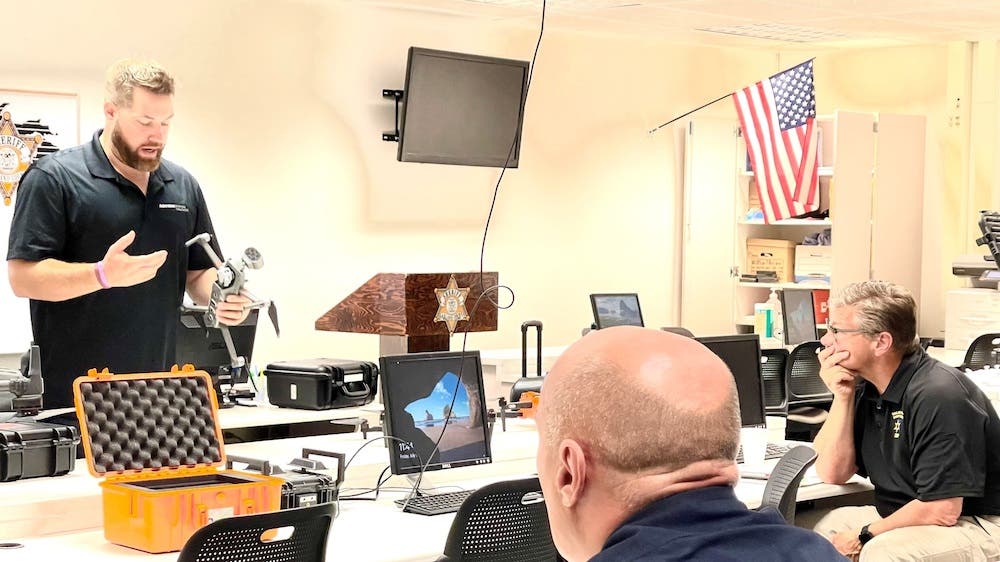Pilots using drones in new and innovative ways can face uncertainty in terms of insurance liability. How can B2B drone insurance companies bridge the gap between innovation and liability, and how do individuals know their insurance covers them? Let’s talk about it.
Uncertainty for Individuals
Commercial drone pilots face uncertainty regarding their insurance coverage, particularly when they are using drones in new ways.
Navigating this uncertainty comes down to understanding the regulations governing commercial drone pilots and drone missions and the coverage offered by the insurance company. Current gray areas in FAA regulations can make it difficult to clearly understand one’s coverage.
“The commercial drone industry is still new. There will be areas of uncertainty in the B2B drone insurance company’s coverage — for example, the types of operations and whether there are any gaps in that coverage. So that problem does still exist. I don’t believe it has been entirely, fully answered just yet in the commercial drone industry, being as new as it is,” noted Chad Collier, Chief UAS Pilot at Adorama. “I think a way that insurance companies can help bridge that uncertainty is providing basic education to their end-users.”

This education and training could involve insurance companies collaborating with universities or other registered training entities. In order to clear up the uncertainty plaguing the B2B drone insurance industry, it’s essential that courses assist pilots in their specific flight operations and help educate them on their area of operations. This training, in turn, must be standardized, allowing insurance companies to follow that standardization to inform their insurance coverage.
“Training entities could explicitly create a range of training courses catering to specific drone industries, including critical applications that drones are currently being used in, for example, search and rescue, or utilities inspections,” explained Collier. “From that training, the drone insurance company can build in the coverage, the insurance, and the back-end liability of what they want to be passed along to the users.”
Evolution of Regulation
The landscape for insuring drones is rapidly evolving, and the uses for drones are multiplying. Often, there are no regulations to guide either the end-user or the insurance companies. Drone operators, particularly ones breaking new barriers, have to protect themselves and their businesses. The best way to do that is to build a national standard. However, as yet, there is no such thing.
“There are a lot of gray areas that the FAA currently has as far as regulations. I know with law enforcement, for example, public safety agencies in the United States can obtain a CoA, a certificate of authorization from the FAA, which spells out in great detail precisely the type of operations and what is covered and what is not,” said Collier. “However, if you’re not a government entity conducting an actual public safety mission, then you still need a commercial pilot’s license to go out and do your day-to-day training before you take your drone out in the field and try to conduct a life-saving operation, for example. Those kinds of cross-overs create confusion.”

Before 2019 the ever-changing regulations added another layer of confusion to commercial drone operations. However, at the end of 2019 into 2020, a new standard of regulations was released. The FAA is now moving away from short-term regulation changes and creating a long-term roadmap that extends into 2023. However, there’s still a lot of uncertainty.
The Solution?
There needs to be collaboration between insurance companies, the FAA, and training entities.
“I worked for State Farm’s Research Lab. We worked closely with the FAA and in this kind of testing and evaluating how certain operations can be conducted safely. All of that feedback was passed along to the FAA, and it sounds like they are listening. They want to make sure that people are doing things safely with it and try not to become overbearing at the same time, which is problematic because everybody wants to get into this,” noted Collier.
Tips for Commercial Drone Pilots:
- It’s always a good idea to review your coverage before you fly—make checking your insurance part of your pre-flight checklist. If there is any uncertainty, call your insurance provider to discuss.
- Make sure you check the local regulations before you take off. This is especially true if you are a business operating in a new state, town, or county. Violation of any regulations on a federal or state level will invalidate your insurance.
- Keep up-to-date with the FAA’s drone regulations and what you need as a commercial pilot at the FAA drone website.







